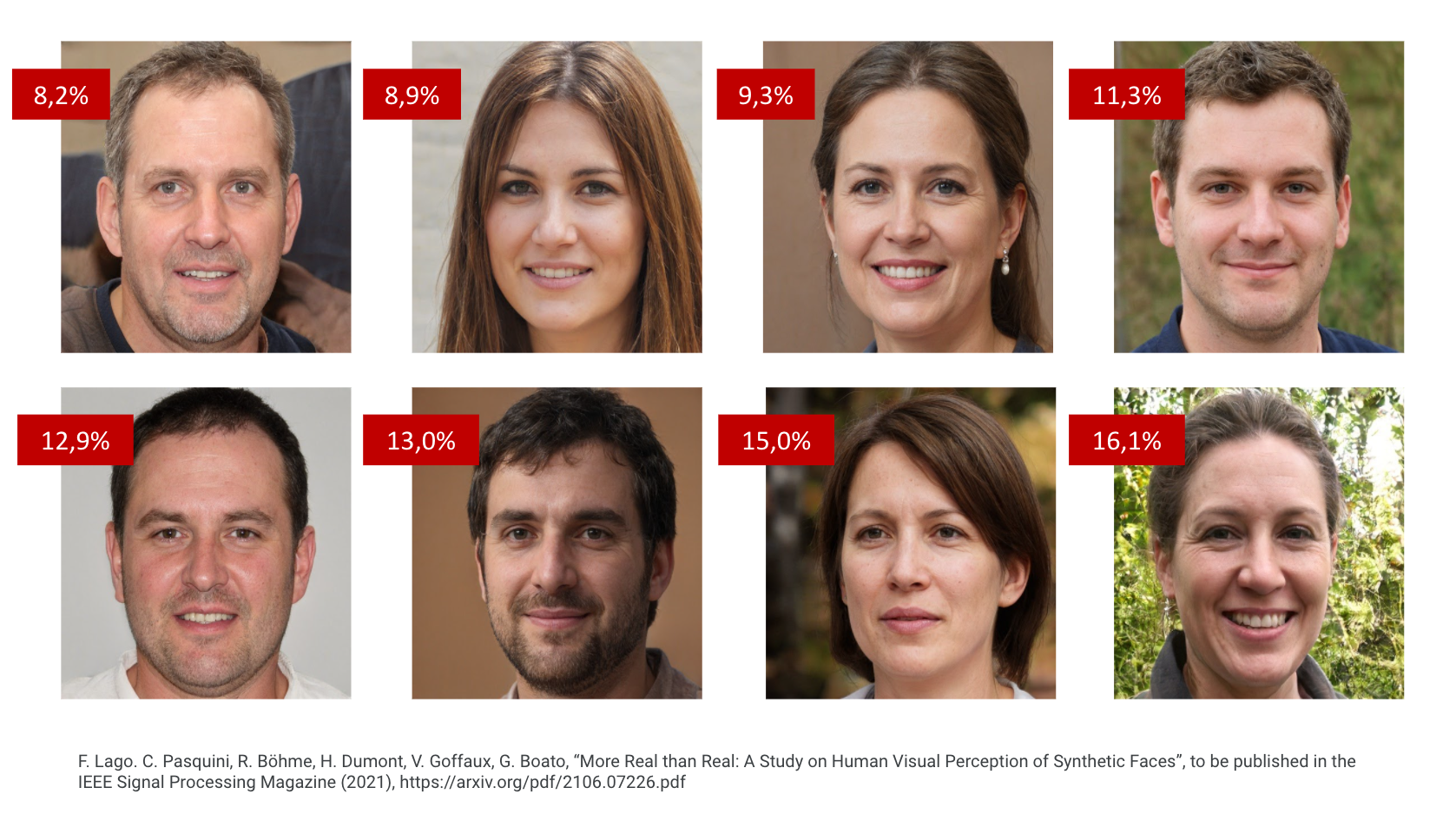




Manipulating an image or video is becoming easier and easier: deepfakes, that is, real-looking images or videos created synthetically by means of Artificial Intelligence, is a growing phenomenon today. Besides a few examples of jokes and fun applications, the scenarios opening up are alarming: fake news, cyber scams, cyberbullying and revenge porn are just a few examples. TrueBees combines digital forensics methods with blockchain technology to counter the diffusion of deepfakes on social networks.
Have you ever wondered what happens every 60 seconds on the Internet? We share more than 300,000 photos on social networks, broadcast nearly 700,000 videos on YouTube and publish about 600,000 posts on Twitter! Definitely mind-boggling numbers if you multiply them by the amount of seconds per day; numbers that lead us to think about what the Web really means for us today.
On the one hand, over the years, the Internet has become synonymous with undeniable democratisation and freedom; a fertile space where to find and share information. On the other side of the coin, however, this same freedom makes it a vulnerable space, since each user can make any type of content available, even though s(he) might not be legitimised or authorised to do so. Anyone, in fact, can easily create content or access it, as well as - unfortunately - manipulate it.
In the latter case we refer to the deepfake phenomenon, a neologism that derives from the fusion of the words deep learning (a branch of Artificial Intelligence, AI) with fake, and that consists of a AI-based technology able to create realistic, yet phoney images.
Besides jokes and fun applications of this technology (you remember Queen Elizabeth’s Christmas message ), deepfakes represent a harmful tool for misinformation and disinformation, including usage for denigration, porn revenge, cyberbullying, cyber scams, public opinion manipulation, and fake news - certainly not problems to take lightly.
To counter this phenomenon, numerous research teams around the world have started developing computer systems able to verify the trustworthiness of photos and videos circulating on the Internet. Yet, it is not only a race against time; it is also a race against the technology itself, which keeps evolving at a rapid pace up to the point of reaching such a high sophisticated level that synthetic images are now so real that they easily fool our eyes.
 Examples of AI-generated photos; yet, only a small percentage of people (red box) is able to recognize that the image is fake.
Examples of AI-generated photos; yet, only a small percentage of people (red box) is able to recognize that the image is fake.
Indeed, people naturally tend to believe what they see, especially if it traces reality in an almost perfect way. However, technology can also be used against the worst version of itself: it is possible to leverage AI to create a protection tool for Internet users, so that questions like “Is this image real? Can I trust and share it in my turn?” can eventually be answered.
Starting from these provocative questions, we joined up with a team of researchers from the University of Trento and won the Trublo Open Call, by presenting the TrueBees project which aims to counteract the spread of deepfakes, specifically on social media.

In order to achieve this ambitious goal, our team plans to combine Artificial Intelligence tools for the recognition and classification of fake images, with a blockchain system for storing such information and make it accessible to anyone who wants to ask about the trustworthiness of an image.
At U-Hopper, we are proud to work on such a delicate and current issue - our goal is not only to create an effective tool to protect users, but also to shed light on these grey areas of the Web that today unfortunately cause for concerns and danger. Moreover, we are particularly happy to carry out this project together with a great team of the University of Trento!
Drop us a message to find out more or visit Trublo’s official website and subscribe to their newsletter to stay updated on this and other interesting innovative R&D projects!
Disclaimer: Trublo is an European project funded by the European Union’s Horizon 2020 research and innovation programme, under grant agreement No. 957228, which aims at promoting new technologies (such as blockchain) to revolutionise the media sector.